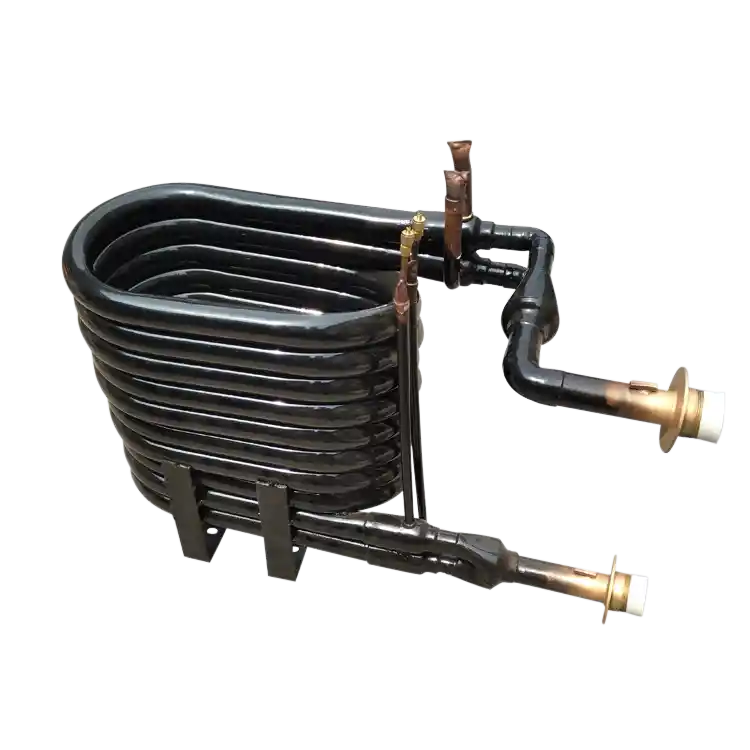Introduction
In this article, we will explore how the implementation of coaxial heat exchangers can significantly enhance energy efficiency and comfort levels in residential buildings. We will discuss the working principle, advantages, and diverse applications of coaxial heat exchangers in the context of residential HVAC (Heating, Ventilation, and Air Conditioning) systems.
1. Understanding Coaxial Heat Exchangers
Coaxial heat exchangers are specialized devices designed to facilitate heat transfer between two fluid streams. With their unique configuration, they offer several benefits for residential HVAC applications.
1.1 Working Principle of Coaxial Heat Exchangers
Coaxial heat exchangers utilize a concentric design with an inner tube and an outer tube. This configuration enables the simultaneous flow of hot and cold fluids, facilitating efficient heat transfer through conduction and convection. The heat is transferred from the inner tube (hot fluid) to the outer tube (cold fluid).
1.2 Advantages of Coaxial Heat Exchangers in Residential Buildings
Coaxial heat exchangers offer numerous advantages when integrated into residential HVAC systems:
| Advantages | Descripción |
|---|---|
| Enhanced Efficiency | The coaxial configuration maximizes heat transfer surface area, resulting in improved overall system efficiency and reduced energy consumption. |
| Compact Design | Coaxial heat exchangers have a small footprint, making them suitable for installation in space-constrained residential buildings. |
| Reduced Noise | The design of coaxial heat exchangers helps minimize operational noise, contributing to a quieter living environment. |
| Corrosion Resistance | Coaxial heat exchangers can be constructed using corrosion-resistant materials, ensuring durability and longevity. |
| Flexible Installation | Coaxial heat exchangers can be installed horizontally or vertically, providing flexibility to adapt to different residential building layouts. |
2. Applications of Coaxial Heat Exchangers in Residential Buildings
Coaxial heat exchangers find diverse applications in residential HVAC systems, significantly improving energy efficiency, comfort, and indoor air quality.
2.1 Geothermal Heat Pumps
Coaxial heat exchangers play a crucial role in geothermal heat pump systems for residential buildings. They facilitate the exchange of heat between the refrigerant circulating in the ground loop and the fluid used in the heat pump. This enables efficient heating and cooling of homes throughout the year, reducing energy consumption and operating costs.
2.2 Heat Recovery Ventilation (HRV) Systems
Coaxial heat exchangers are employed in HRV systems to recover heat from the stale air being exhausted from the house. This recovered heat is transferred to the fresh incoming air, preheating it before it enters the living space. HRV systems with coaxial heat exchangers enhance indoor air quality while minimizing energy loss.
2.3 Domestic Hot Water Heating
Coaxial heat exchangers can be integrated into residential hot water systems, where they efficiently transfer heat from the primary heating source (e.g., boiler, heat pump) to the domestic hot water supply. This ensures consistent hot water availability while maximizing energy efficiency.
2.4 Radiant Floor Heating Systems
Coaxial heat exchangers are utilized in radiant floor heating systems to transfer heat from the hot water source to the tubing embedded in the floor. This provides comfortable and energy-efficient heating throughout the residence, eliminating the need for bulky radiators or forced-air systems.
Conclusion
By incorporating coaxial heat exchangers into residential HVAC systems, homeowners can experience enhanced energy efficiency, improved comfort, and reduced operating costs. The unique design and advantages of coaxial heat exchangers make them an ideal choice for various applications in residential buildings, ensuring a sustainable and comfortable living environment.


